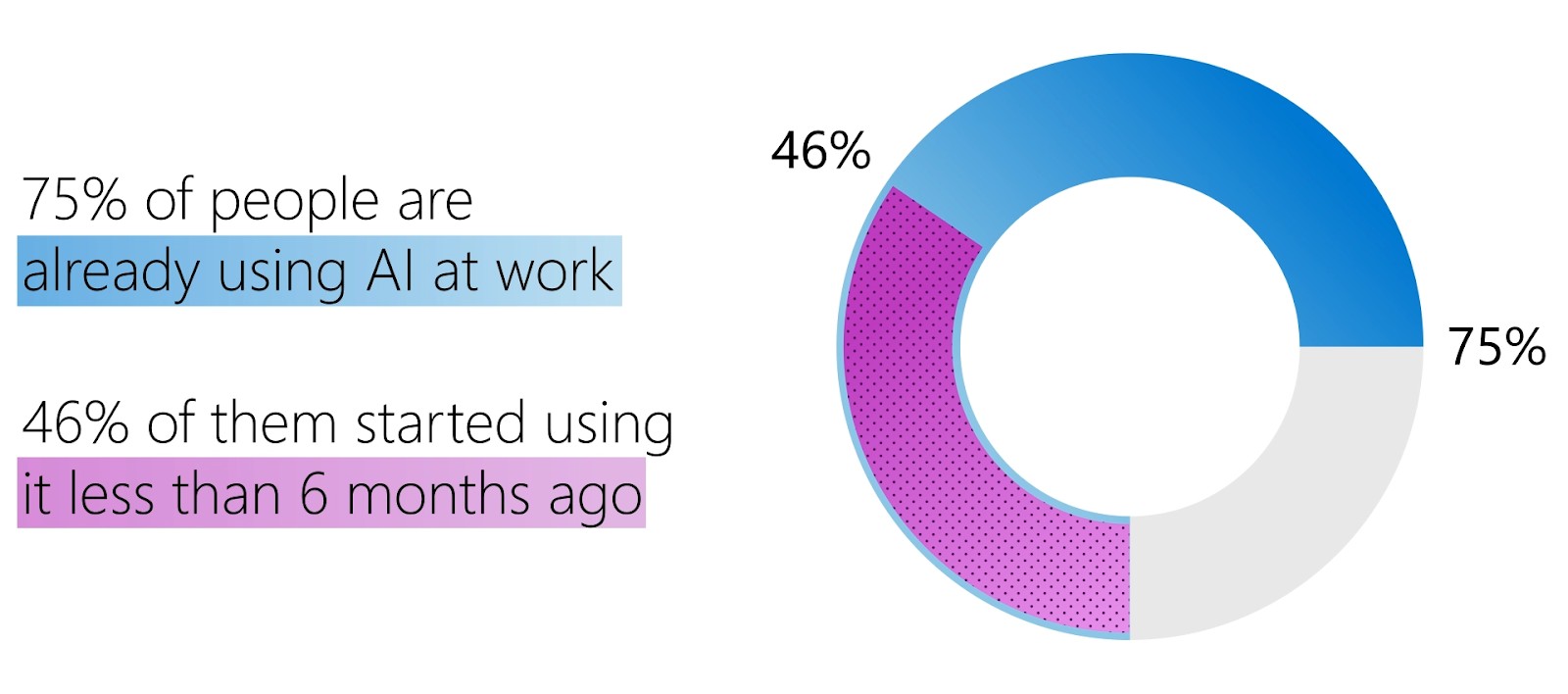The adoption of AI into the workplace increased impressively, as one can tell from a recent survey where 75% of work-seeking technologies worldwide are using this powerful AI technology. The growing gap between the number of open jobs and the number of unemployed, reported in the 2024 Work Trend Index by Microsoft and LinkedIn, is proof of the significance AI is adding to the bow of a worker. Experts are still trying to put AI in their resumes so they are able to take advantage of the positions where there will be a need for this skill set in demand in the future.

Source: Microsoft
The rise of AI in the workplace
Perfectly in line with the data is the phenomenon of AI disruption in the workplace, which, in turn, leaves many leaders saddled with one tricky dilemma. On the one hand, they believe that AI is imperative to business. Its ability to make proper decisions, collaborate with the people, and provide the company with the best results is understood. However, a very large number of leaders indicate an unclear AI vision and strategy within their organizations to be a main problem.
A utopian vision of the future leaving employees without a clear plan has developed a trend known as BYOAI (Bring Your Own AI) in which employees start to integrate AI on their own into their workflow. It means that the organization’s officials who are ready to underuse AI are a piece of the solution. However, the need for the organization to have a strategy for the introduction of AI is still a burning issue.
Satya Nadella, chairman, and CEO, at Microsoft have wisely described, that AI is democratizing expertise everywhere through the workforce.Unfortunately, even when leaders recognize this and their futility, there is still inertia, in the decision-making process, due to the pressure to show immediate return on investment (ROI) which is ironically now catalyzing AI.
Leaders’ dilemma: Embracing AI or risking obsolescence
Organizations that could benefit from this transition by integrating AI to increase their competitiveness in the market and make their operations cost-effective and customers-oriented will certainly make huge leaps in the process. The development of expertise in comparison with the other technological disruptions, for instance, the time when the internet was first introduced or the personal computers made their entry brings about a different change which is organizational transformation over time.
AI is already altering the existing dynamics in the workplace and won’t stop there. It will make changes in the work too. Along with this is the perennial worry about robots replacing human beings but employers also complain about scarcity for filling critical jobs. AI skills are put on almost an equal footing with experience by choices people make when searching job opportunities.
Though AI lifts up the skill requirements for different professions, it also gives hope to those whose careers have stopped, allowing them to penetrate through the previously imposed ceilings and proceed to further development which was, before, unimaginable.
This era of technological breakthroughs progressing at a fast pace should not let us get too comfortable. Those who change with the flow will not only live but also win, while those who don’t change will float along and ultimately be pushed out. AI at work is no longer a fantasy vulnerability but a painful truth, as attested by numerous surveys and studies.





